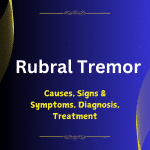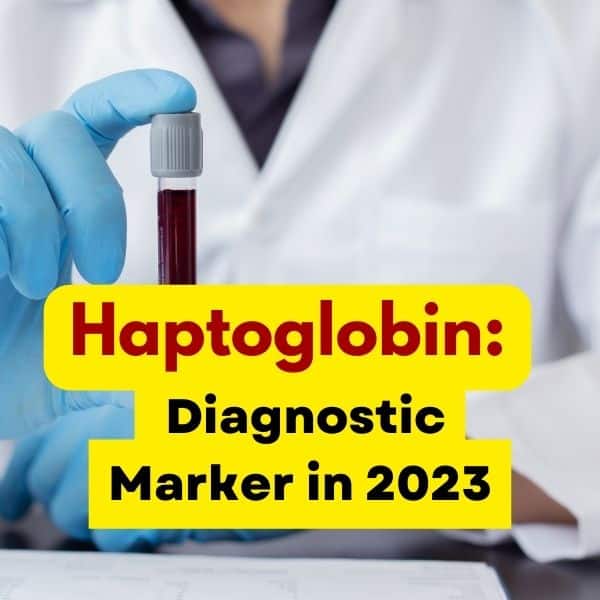1. Introduction
Definition of Haptoglobin
Haptoglobin is a protein that aids in the binding and transportation of hemoglobin, the molecule that transports oxygen in red blood cells, in the blood. Haptoglobin is produced in the liver and can be seen in high concentrations in blood plasma. When red blood cells are damaged or destroyed, hemoglobin can escape from them and cause oxidative damage to other cells and tissues.
Haptoglobin binds to free hemoglobin and forms a complex that is removed by the spleen and liver. This way, haptoglobin prevents hemoglobin from causing harm and also conserves iron, which is an essential component of hemoglobin.
Discovery
Haptoglobin was discovered in 1938 by Danish biochemist Erik Jorgensen, who dubbed it the “hemoglobin-binding protein” at the time. It was later named “haptoglobin” by American scientist William Cohn. Haptoglobin’s role in binding and eliminating hemoglobin from circulation has been intensively explored since its discovery, as has its potential diagnostic significance in a variety of disorders.
2. Structure and Function of Haptoglobin
Hp is comprised of two alpha-beta dimers, with each alpha chain containing a single Hb-binding site. The beta chains are responsible for Hp’s structural stability and allow it to form a tetrameric structure.
a. Haptoglobin Protein Structure and Isoforms
Haptoglobin is a glycoprotein composed of two alpha subunits and two beta subunits. The alpha and beta subunits are identical, but the beta subunits can be of two types (designated as 1 and 2), resulting in three distinct isoforms: Hp1-1, Hp2-1, and Hp2-2. Haptoglobin isoforms with differing binding affinities for hemoglobin have been identified.
b. Binding and Transport of Hemoglobin
One of the primary tasks of haptoglobin is to attach to free hemoglobin in circulation, preventing its oxidation and subsequent accumulation in tissues. Once coupled to hemoglobin, haptoglobin is removed from the bloodstream by the liver and spleen. Macrophages recognize the haptoglobin-hemoglobin complex and phagocytose and destroy it.
3. Haptoglobin Gene Polymorphism
Haptoglobin gene polymorphism refers to variations in the DNA sequence of the haptoglobin gene that result in different forms of the haptoglobin protein. The most common variations are called Hp1 and Hp2. Individuals can be homozygous for either Hp1 or Hp2 or heterozygous for both.
a. Definition and Types of Gene Polymorphism
A gene polymorphism is a variation in the DNA sequence of a gene that occurs at a frequency greater than 1% in the population. The most prevalent variation in haptoglobin involves the protein’s beta subunit, resulting in the Hp1 and Hp2 variants.
b. Role of Haptoglobin Gene Polymorphism in Disease
According to research, the haptoglobin gene polymorphism is linked to a variety of disorders, including cardiovascular disease, diabetes, and cancer. The Hp2-2 genotype, for example, has been connected to an increased risk of cardiovascular illness, whereas the Hp1-1 genotype has been linked to an increased risk of diabetes complications.
Normal Levels of Haptoglobin
A normal level of haptoglobin varies depending on age, sex, and other factors, but typically falls within a range of 40 to 200 mg/dL (milligrams per deciliter). Low levels of haptoglobin may indicate hemolysis, liver disease, or certain genetic disorders, while high levels may be a sign of inflammation or infection.
4. Diagnostic Value of Haptoglobin
Haptoglobin has been found to have potential diagnostic value in various medical conditions. Its level can be measured in blood tests to assist in the diagnosis of certain diseases, such as hemolytic anemia, a condition where red blood cells are destroyed faster than they are produced. Additionally, low levels of haptoglobin have been associated with increased risks of infections, cardiovascular diseases, and certain cancers, making it a valuable diagnostic marker in these conditions.
a. Haptoglobin in Clinical Laboratory Tests
Haptoglobin levels can be measured in clinical laboratory tests and are often used as an indicator of
hemolysis – the breakdown of red blood cells. In cases of hemolytic anemia, haptoglobin levels are
typically low due to the binding and removal of hemoglobin by haptoglobin.
b. Haptoglobin in Diagnosis of Hemolytic Anemia and Other Diseases
Haptoglobin levels have been explored as a potential marker for various disorders, such as sepsis and liver disease, in addition to their application in detecting hemolytic anemia. However, its diagnostic use in these situations is still being researched, and further research is needed to demonstrate its utility in clinical practice.
5. Role of Haptoglobin in Health and Disease
Haptoglobin is a glycoprotein secreted into the bloodstream by the liver. It is essential for scavenging free hemoglobin produced by broken red blood cells. Haptoglobin binds to hemoglobin to create a complex, which is then taken from circulation and degraded by the liver. However, new research has revealed that haptoglobin has a role in a variety of disorders.
Haptoglobin in Hemolytic Anemia
Hemolytic anemia occurs when red blood cells are destroyed quicker than they can be produced. Haptoglobin levels in the blood drop rapidly in this condition as free hemoglobin enters the circulation. As a result, assessing haptoglobin levels can help in the diagnosis of hemolytic anemia.
Haptoglobin in Cardiovascular Disease
Low levels of haptoglobin have been linked to an increased risk of cardiovascular disease in studies. This is because haptoglobin functions as an antioxidant, protecting the blood vessel lining from oxidative damage. As a result, haptoglobin has the potential to be a therapeutic target for cardiovascular disease.
Haptoglobin in Cancer
Haptoglobin has been implicated in cancer progression. The presence of haptoglobin has been associated with enhanced tumor growth and invasion in various kinds of cancer. Haptoglobin, on the other hand, has been demonstrated to have a protective impact on various forms of cancer by reducing tumor cell proliferation and metastasis. More research is required to fully comprehend the role of haptoglobin in cancer.
6. Haptoglobin as a Biomarker for Various Diseases
A biomarker is a quantifiable sign of the existence or severity of a disease. Biomarkers can be utilized in illness diagnosis, prognosis, and therapy response monitoring. Biomarkers are classified into three types: genetic, protein, and imaging biomarkers.
Haptoglobin as Biomarker in Disease Diagnosis and Prognosis
Haptoglobin can be utilized as a biomarker for a variety of disorders, including hemolytic anemia, cardiovascular disease, and some cancers. In certain disorders, measuring haptoglobin levels can help with diagnosis, prognosis, and tracking disease progression.
7. Therapeutic Potential of Haptoglobin
Haptoglobin is a promising therapeutic target due to its role in modulating inflammation and oxidative stress. Studies have shown that increasing haptoglobin levels may have beneficial effects on a variety of conditions, such as sepsis, Alzheimer’s disease, and cardiovascular disease. Additionally, haptoglobin gene therapy has shown potential for treating hemolytic disorders. Ongoing research on haptoglobin’s therapeutic potential holds promise for developing new treatments for these and other conditions.
Haptoglobin Therapy in Hemolytic Anemia
In hemolytic anemia, haptoglobin levels decrease rapidly, leading to free hemoglobin accumulation
and oxidative damage. Therefore, haptoglobin therapy has been investigated as a potential
treatment for hemolytic anemia. Studies have shown that the administration of haptoglobin can reduce
oxidative stress and improve clinical outcomes in hemolytic anemia patients.
Haptoglobin in Cardiovascular Disease Treatment
Haptoglobin has the potential to be a therapeutic target for cardiovascular disease due to its antioxidant capabilities. In preclinical models of cardiovascular illness, haptoglobin treatment has been found to improve endothelial function and reduce oxidative stress.
Haptoglobin in Cancer Treatment
According to research, depending on the type of cancer, haptoglobin can have both pro- and anti-tumor effects. As a result, haptoglobin-based cancer therapies must be carefully customized to the individual type of cancer being targeted.
Conclusion and Future Prospects
Haptoglobin is a glycoprotein that scavenges free hemoglobin while also protecting the body from oxidative damage. It may potentially be useful as a biomarker and therapeutic target for a variety of disorders such as hemolytic anemia, cardiovascular disease, and cancer.
Future Research Initiatives
Future haptoglobin research should concentrate on establishing new diagnostic and treatment solutions for disorders in which haptoglobin is involved. Furthermore, more research is needed to completely understand haptoglobin’s role in cancer and to evaluate whether haptoglobin-based therapies have clinical potential.
Finally, haptoglobin is a complex protein that is becoming increasingly important in a variety of clinical applications. Its critical role in binding and conveying free hemoglobin, as well as assisting in illness diagnostics and potential treatment approaches, emphasizes the need for additional research. As more of haptoglobin’s secrets are revealed, the potential for novel clinical uses will definitely emerge, and the future seems promising for this vital protein.
FAQ
What is haptoglobin?
Haptoglobin is a protein in the blood that binds to and transports free hemoglobin, protecting the
body from hemoglobin-induced oxidative damage and inflammation.
What is the function of Haptoglobin?
The primary function of haptoglobin is to bind to free hemoglobin, which is released into the bloodstream when red blood cells are destroyed. This prevents hemoglobin from causing damage to tissues and organs and helps to remove it from the body.
What is the normal range of Haptoglobin?
The normal range of haptoglobin varies depending on the laboratory and testing method used. In general, the reference range is between 40 and 200 milligrams per deciliter (mg/dL).
What does low Haptoglobin indicate?
Low haptoglobin levels in the blood may indicate a variety of conditions that result in the destruction of red blood cells, such as hemolytic anemia, liver disease, or certain cancers.
What does high Haptoglobin indicate?
High haptoglobin levels may indicate inflammation, infection, or tissue damage.
What are the therapeutic potentials of Haptoglobin?
Research has shown that haptoglobin has potential therapeutic applications in a variety of conditions, including cardiovascular disease, hemolytic anemia, and Alzheimer’s disease.
What is the diagnostic value of Haptoglobin?
Haptoglobin can be used as a diagnostic marker for certain conditions, such as hemolytic anemia and liver disease. Low levels of haptoglobin may also be a diagnostic indicator of certain cancers.
What is the role of haptoglobin in disease?
Haptoglobin is involved in several disease processes, including hemolytic anemia, cardiovascular
disease, and cancer. Changes in haptoglobin levels can be a biomarker for these diseases and can
also be a target for therapeutic interventions.
Latest Posts
- Premenstrual Syndrome (PMS) Explained: Powerful Relief Strategies for 2026

- Magnetic Seizure Therapy (MST): A Breakthrough in Psychiatric Treatment in 2025

- AIIMS New Delhi, NIMHANS Bengaluru, JIPMER Puducherry: No Leaves for Healthcare Workers Amid Tensions

- Narcissistic Personality Disorder in 2025: Unveiling the Hidden Struggles and Empowering Recovery

- Conquering Rubral Tremor: Unveiling Effective Treatments in 2025

